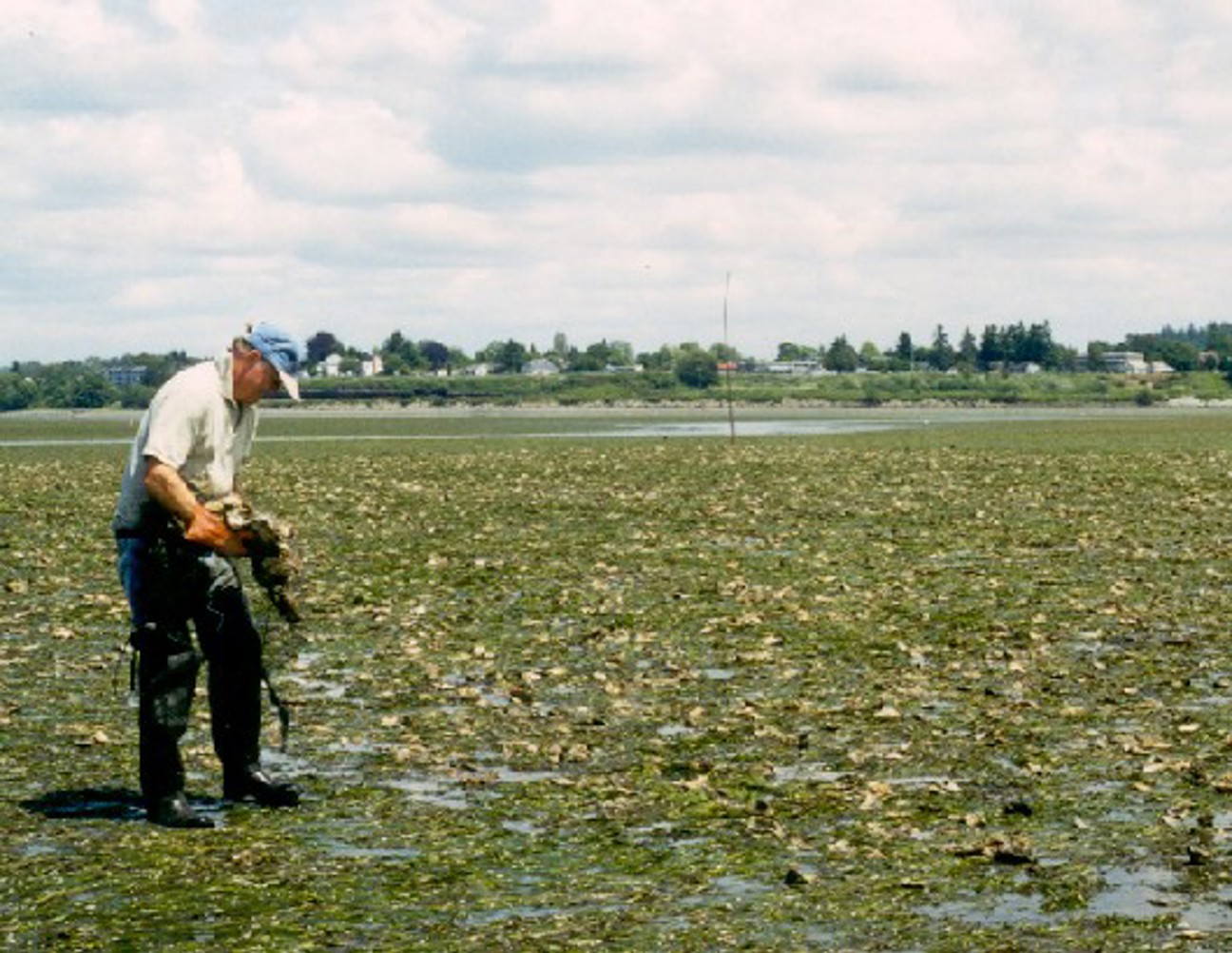Pacific Oyster
The Pacific oyster is a non-native species found in the waters of Whatcom County and Puget Sound. It was introduced into our waters from Japan- hence one of its common names- Japanese oyster. The Pacific oyster is a bivalve (composed of 2 shells, hinged together). Its shell is rough and highly fluted. The average size of a 2-3-year-old oyster is 4-5 inches, however, it has been known to reach lengths up to 10 inches.
Photo Credit: Crassostrea gigas, PSRF
Distribution
The Pacific oyster prefers to attach itself to a hard surface and can be found on firm mud, sand, gravel or rock substrate in the lower inter-tidal zone, down to a depth of roughly 13 feet. The range of the Pacific oyster on the west coast of the United States extends from southeastern Alaska down to southern California. In Whatcom County, Pacific oysters are found in Drayton Harbor and portions of Bellingham Bay, where much of the commercial and tribal harvesting of this resource has occurred in the past.
Reproduction
Oysters spawn at temperatures above 64°F (18°C), releasing their eggs directly into the water column. Once the larvae have matured enough, they settle to the bottom and attach themselves to substrate, where they remain throughout their adult lives. Because the waters of Puget Sound are generally so cool, natural spawning is sporadic here and commercial fisheries rely on cultured oyster seed to populate their beds.

Ecology
All shellfish are filter feeders, filtering many times their weight in water. They feed on plankton and detritus. This ability causes problems when pollutants, from bacteria to heavy metals, are present in our marine waters. The oyster filters the water and accumulates the pollutants in its tissues. This can result in illness and sometimes death in humans who consume the oyster. In addition, pollutants can result in changes in the growth rate and other biological processes in the oyster, which can have serious impacts on the oyster’s ability to survive. Photo credit (left): Spreading cultured oyster seed on tideflats, Menzies.
Economic Value
While the Pacific oyster is an introduced species, it is a valuable resource to Washington State. Since the early 1900’s, when it was first introduced, the Pacific oyster has done well in Puget Sound waters, providing an income source for many commercial harvesters. It has also been a food source for local tribes. With the increased pollution entering our waters, this valuable resource is being threatened. Due to beds being closed in Portage Bay and Drayton Harbor, the Lummi Nation has lost approximately $250,000 annually in shellfish income and commercial harvesters in Drayton have lost their business and livelihood.
Current Status
One-third of all shellfish beds in the United States are closed to harvesting due to contamination. Since 1981, the Washington Department of Health (WDOH) has downgraded approximately 48,000 acres of commercial shellfish growing areas and upgraded roughly 14,000 acres.
The year 2001 was the first in a decade that did not see the WDOH downgrading any additional acreage of the state’s 84 commercial growing areas due to pollution.
However, 16 areas are listed as threatened, and another 18 are listed as concerned. If the water quality in these areas continues to deteriorate, and efforts aren’t made to correct some of the pollution problems there, they will end up being downgraded.
Approximately 150 acres are currently closed to harvesting in Portage Bay and approximately 2550 acres are currently closed to harvesting in Drayton Harbor.
Sources
- Washington State Department of Health
- Puget Sound Water Quality Action Team
- Pacific States Marine Fisheries Commission